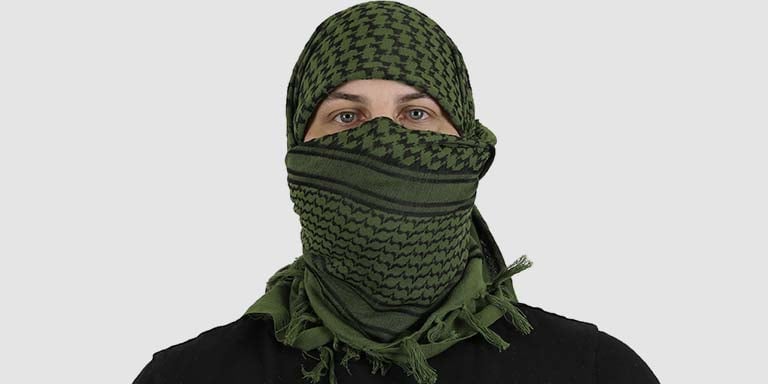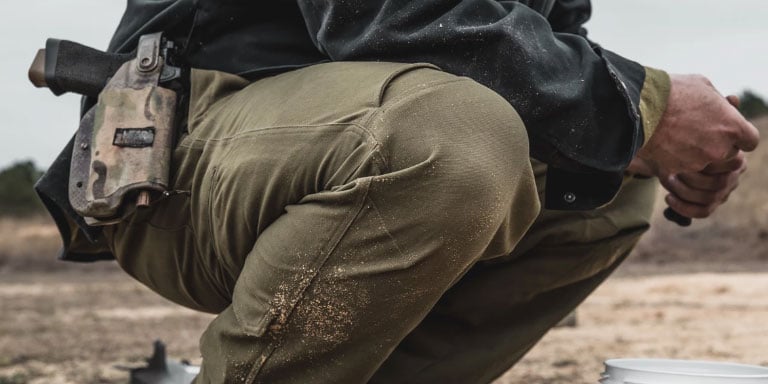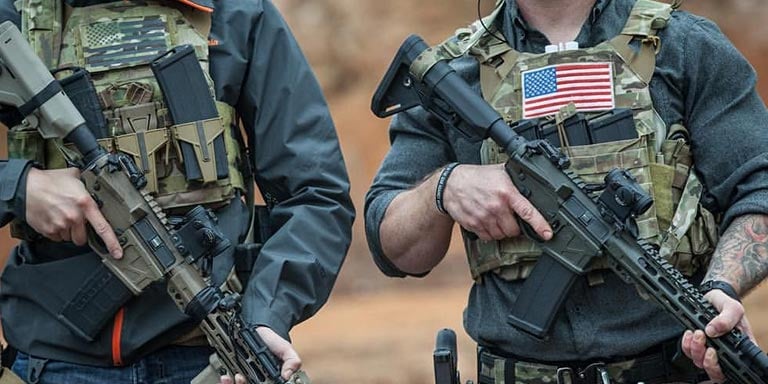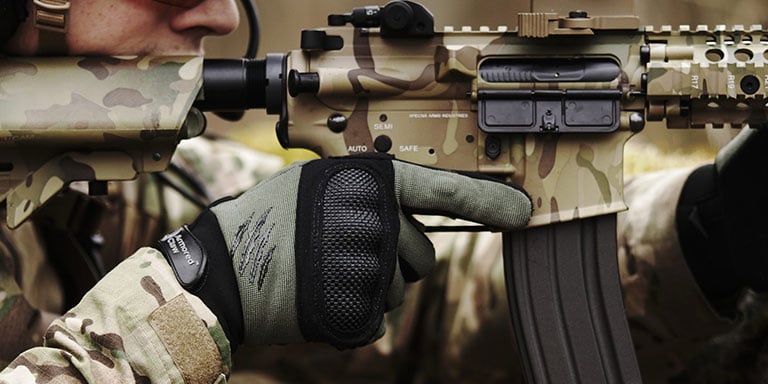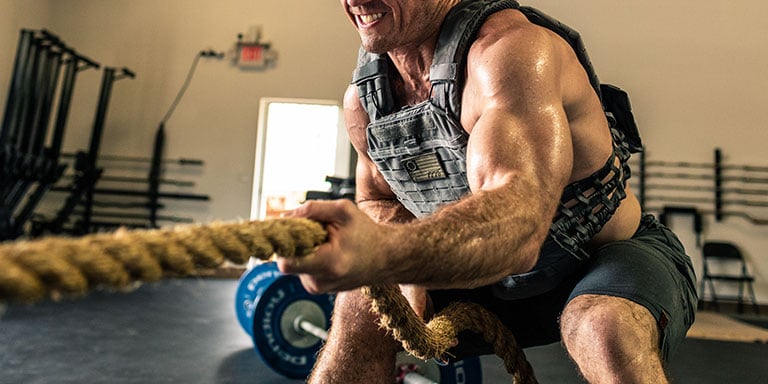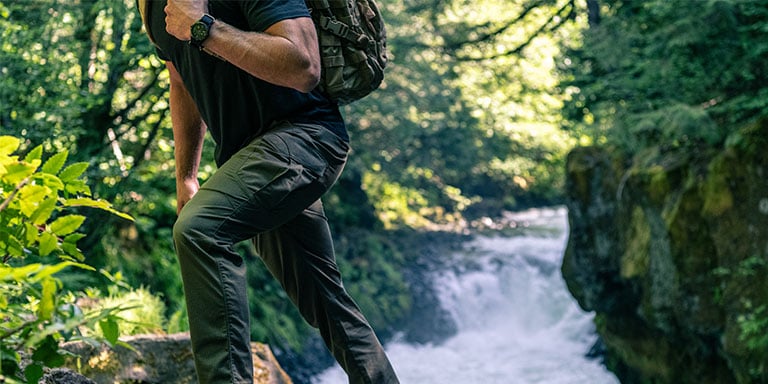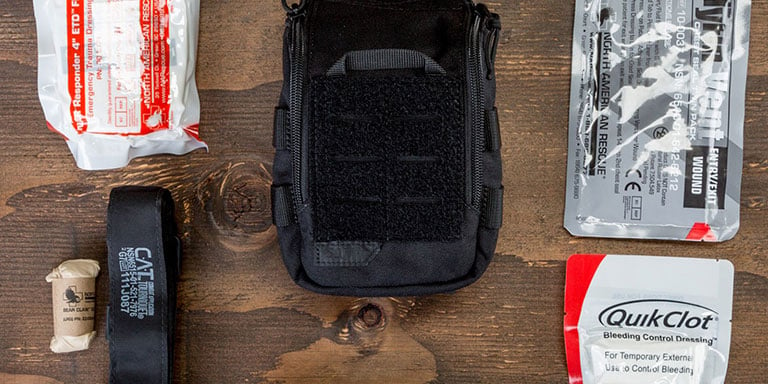
An IFAK (individual first aid kit) is a critical component of your gear, whether you're a police officer, first responder or simply an active outdoorsman. An IFAK is more specialized and more essentialized than a basic survival kit; if space and weight are limiting factors, you'll want to carry something closer to an IFAK.
An IFAK is your best friend when it comes to treating serious trauma. Its contents can also help you treat moderately serious but non-life-threatening illnesses and infected wounds. In this guide, we'll break down the contents of a typical IFAK and briefly indicate how to use each item.
Please note: the medical instruction in this article is merely introductory material and cannot replace proper medical training.
Essential IFAK Components
IFAK contents can vary widely, but any worth its salt should have most or all of the following items.
-
CAT tourniquets
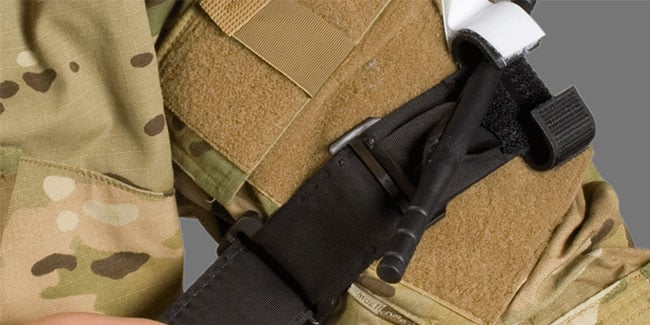
A CAT (combat application tourniquet) is an easy-to-use tool for controlling arterial (that is, rapid and bright red) bleeding. Wrap the band around the injured limb about six inches above the wound site, tighten it by hand as much as you can, then use the windlass to tighten the tourniquet until the windlass won't turn any further. Secure the windlass in place with the retention strap. Tourniquets are extraordinarily painful when applied properly and can necessitate amputation of the affected limb if left in place for long periods, but in the event of a severe arterial bleed, you may have no other choice.
-
QuikClot
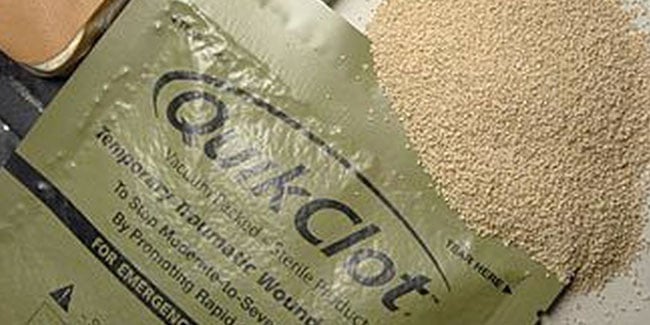
QuikClot is a powder capable of instantly stopping severe bleeding. In general, you should try QuikClot before resorting to a tourniquet. No prescription or license is required to purchase and it's easy to use — just pour it directly into the wound, then pack it down tightly with gauze. QuikClot does cause severe pain on application and can be very difficult for surgeons to remove, so be sure to use it only on life-threatening bleeds.
-
Pressure dressings
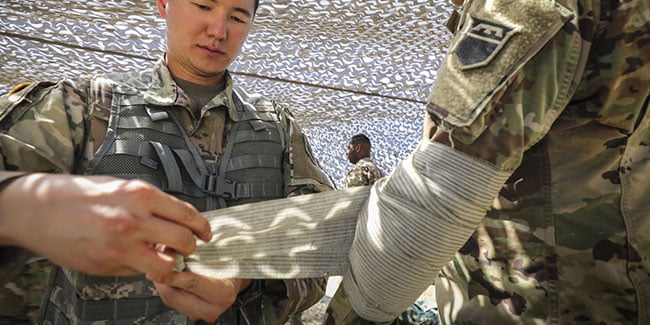
If a wound bleeds dark red and steadily but doesn't warrant a tourniquet, use a pressure dressing, which is simply a bandage with tails or ties that you can knot over the gauze to hold it tightly in place. Some pressure dressings come pre-coated with QuikClot.
-
Petroleum/abdominal dressings
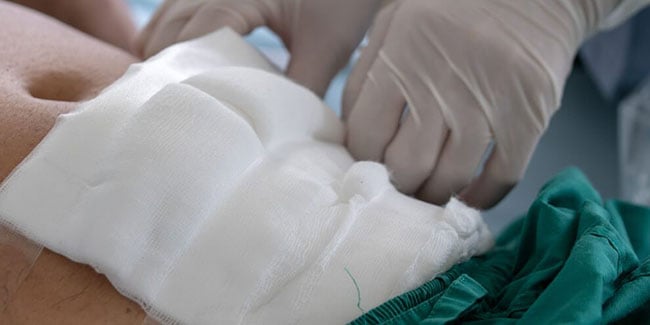
In the event of an abdominal evisceration with exposed viscera, you'll want to have a few petroleum dressings on hand. These are large bandages coated with petroleum jelly which keep intestines and organs relatively moist and clean until the patient can receive proper care. Never attempt to push exposed organs back inside the abdominal cavity — simply lay the dressing loosely on top of them and gently tape it down.
-
Gauze pads and rolls
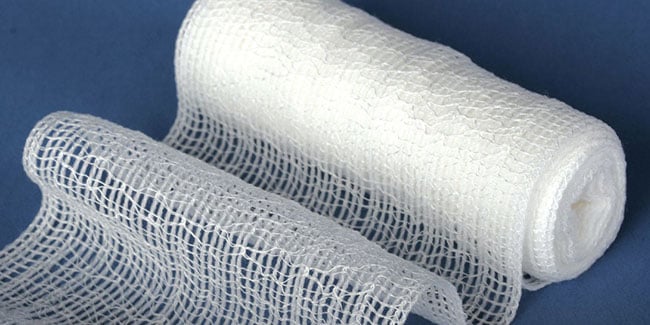
A few rolls and square pads of gauze are useful for padding and wrapping minor wounds.
-
NPA/OPA
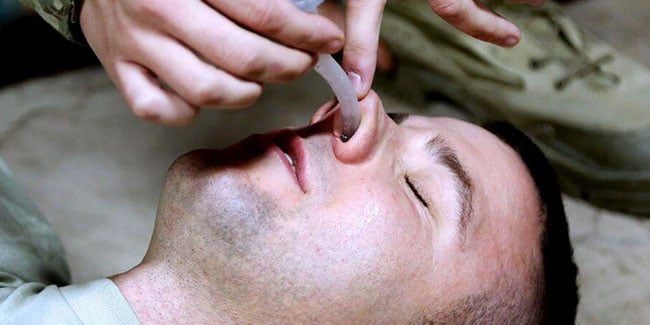
Nasopharyngeal and oropharyngeal airways (NPAs and OPAs) are simple airway adjuncts that can help unconscious patients breathe more easily. Both have simple diagrams on their packaging detailing their use.
-
Trauma shears
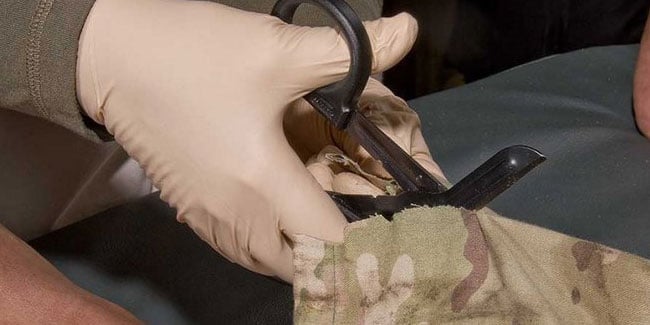
Trauma shears are designed to cut clothing without cutting skin, granting easier access to injured areas of a patient's body.
-
Irrigation syringe
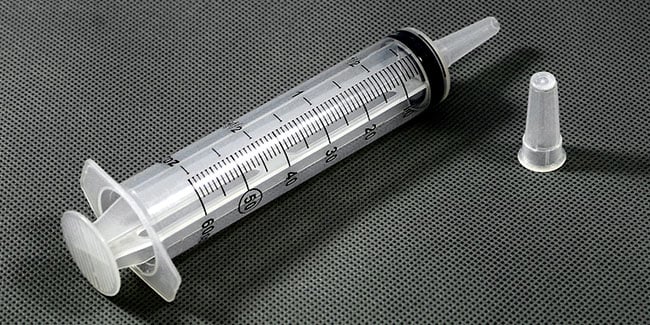
These syringes are filled with sterile saline and come in various sizes, although 5cc and 10cc versions are the most common. They are used to clean debris from wounds prior to suturing or bandaging.
-
Moleskin
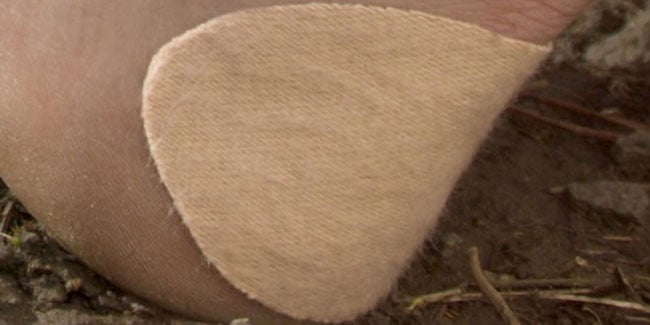
Moleskin is a simple adhesive bandage designed to prevent friction injuries and to help existing ones heal more quickly. Apply it over blisters or painful corns to reduce pain and to keep them from worsening.
-
Triangular bandage
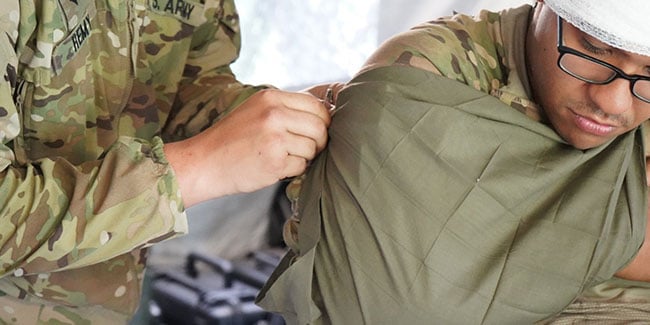
A triangular bandage is a simple but versatile stripe of fabric that can be fashioned into a sling, a pressure dressing, a tourniquet, a head bandage or one of a dozen other useful items.
-
Coban
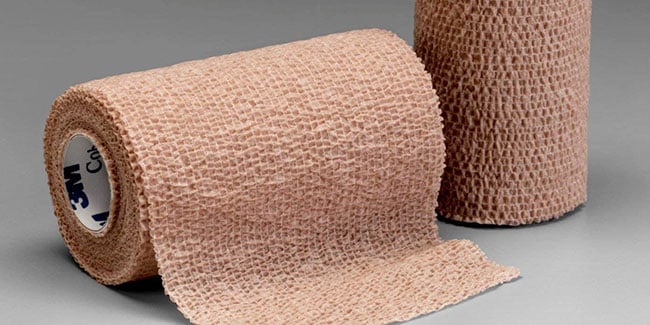
This self-adhesive wrap is great for covering loose gauze bandages and holding them in place. It can also substitute for a wrist or ankle wrap in a pinch.
-
ACE wrap
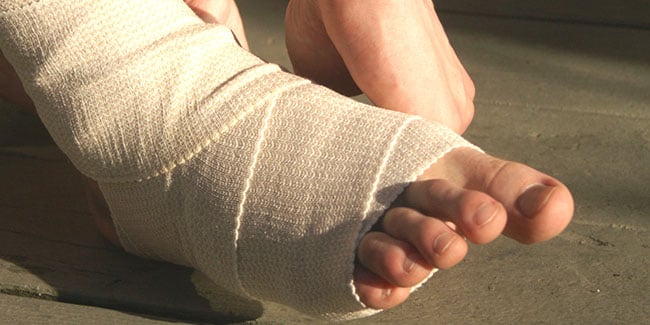
Elastic bandages are a great first-line treatment option for treating sprains. They can also hold other bandages or basic splints in place.
-
Tweezers
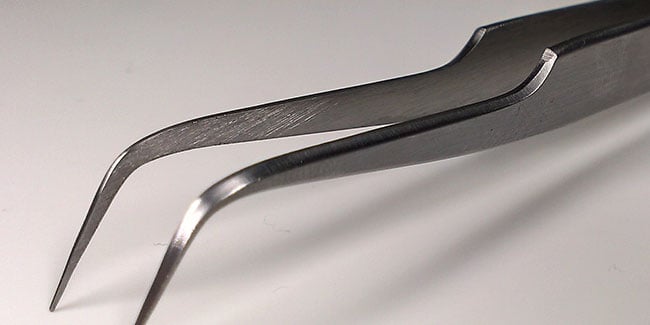
Tweezers have amazing utility, especially in light of how little space they take up. Useful for everything from removing splinters to suturing wounds, they're an indispensable part of an IFAK.
-
Medical tape
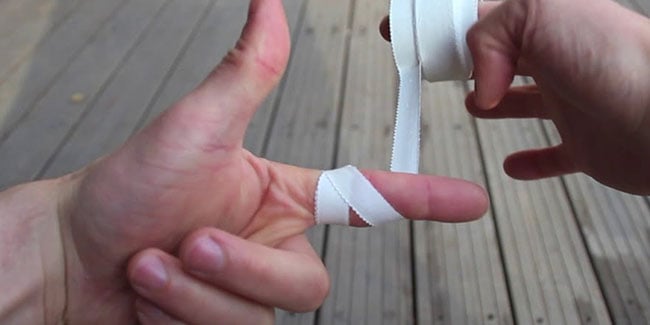
Like tweezers, medical tape has many uses and you should always have some on hand. Besides securing bandages, tape is also good for gently lifting dirt out of wounds, wrapping sprains, and bundling loose items together to create convenient kits.
-
Aluminum splint
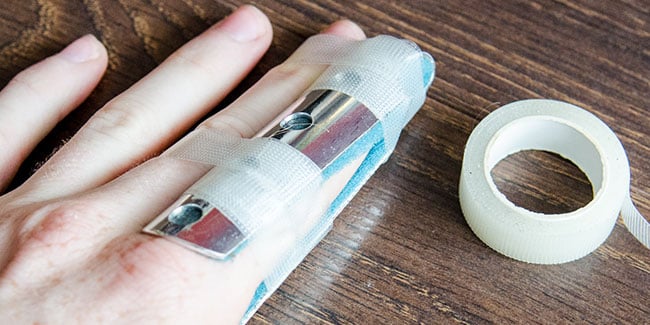
An aluminum splint (often called a "SAM" splint after the most popular brand) is a semi-rigid, flexible sheet of aluminum wrapped in foam. It's used to stabilize sprained or fractured limbs and is usually wrapped with an elastic bandage to keep it in place. Aluminum splints are much better than no splint at all, but because they bend easily, they won't completely prevent the limb from moving.
Advanced IFAK Supplies
Depending on your medical background and local laws, it may be possible to legally acquire advanced medical supplies for your IFAK. If you decide to stock such supplies, seek additional training in their proper use before attempting to treat live patients. There are a few private agencies that offer adapted versions of military training programs, such as Combat Lifesaver Courses, to civilians.
Suture kit or skin stapler
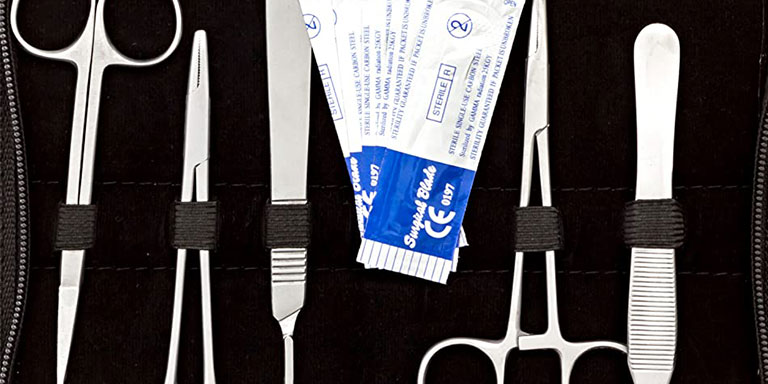
Wounds over a certain length or depth will require sutures or staples to heal properly. Practice treating such wounds by making incisions in old couch or chair cushions, then sewing or stapling them closed. Alternatively, consider stocking Dermabond, a type of superglue designed to close wounds — it's easier to use and more readily available than sutures or staples, although it's less effective for especially wide wounds.
IV saline lock
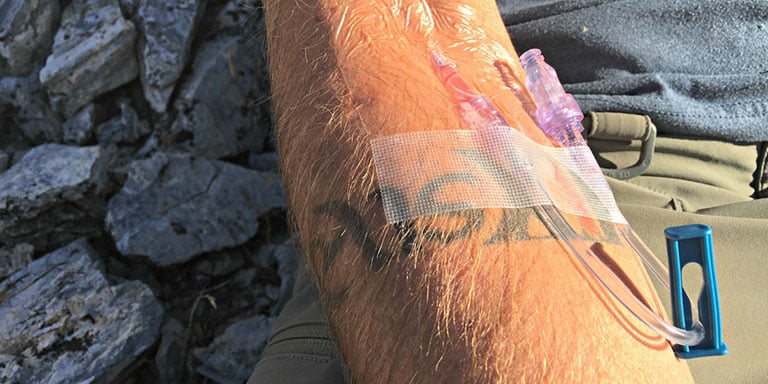
In most countries, you can't legally obtain IV fluids without a prescription or medical license, but in some places, you can freely purchase certain types of needles and saline locks (devices used to establish and maintain IV access independent of the infusion of fluids).
IV therapy is an advanced skill, and a tutorial on the subject is beyond the scope of this article. If you want to carry saline locks in your IFAK, seek accredited medical training first, and practice those skills regularly.
Needle decompression kit and occlusive dressings
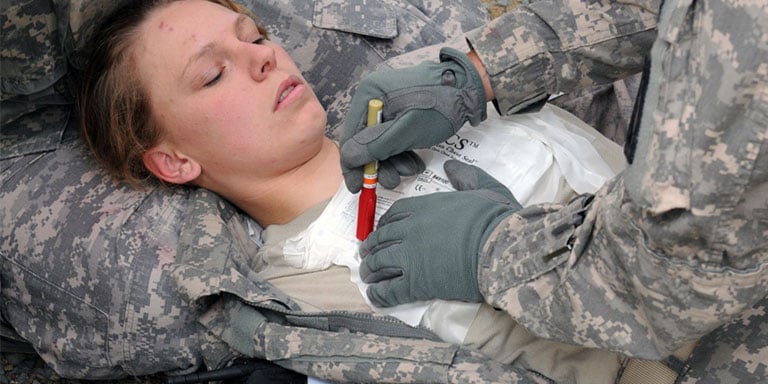
A sucking chest wound is a critical life threat that must be treated immediately. Such wounds can be caused by any penetrating trauma to the chest. Air enters the chest cavity and begins to increase pressure on the lungs and trachea, eventually causing a tension pneumothorax (or one of numerous other complications, any of which can be fatal in short order).
Signs and symptoms of a tension pneumothorax include pain and tightness in the chest, difficulty breathing that worsens over time, sweating, increased heart rate and cyanotic (blue) skin. If you see these signs and symptoms in a patient who has suffered chest trauma, perform a needle chest decompression.
Place the patient on their back and locate the third rib on the injured side of the chest by pressing hard with your fingers (the first rib is tucked under and slightly behind the clavicle, or collarbone—don't count the clavicle itself). When you've located the third rib, insert a 14-gauge needle at a 90-degree angle just over the top of it (as opposed to under the bottom of the second rib), directly above the nipple. You should hear a faint hissing sound as air begins to escape from the chest cavity, which should gradually relieve the pressure on the injured lung. Insert the needle all the way to the hub, then remove it, leaving the plastic catheter in place. Secure the catheter with tape and get your patient to a hospital as quickly as possible.
If you don't have needle decompression supplies or aren't confident in your ability to perform the procedure, apply an occlusive (i.e., non-porous) dressing over the chest wound. Tape the dressing on three sides and leave the fourth side open. This will slow the rate at which pressure on the injured lung increases, but be aware that this treatment only buys the patient a little more time. They still need to see a doctor as soon as possible.
Medications
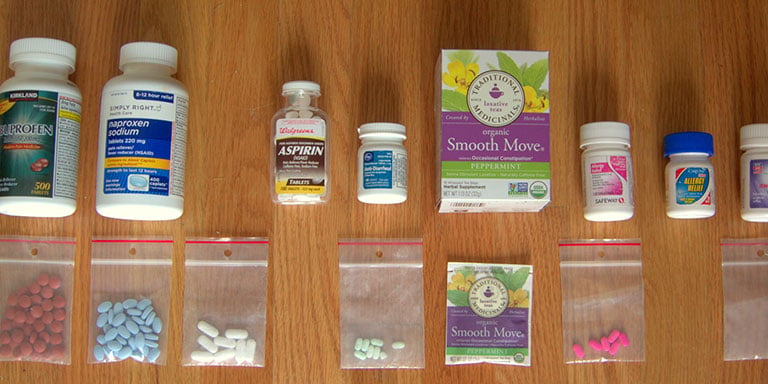
With a small assortment of over-the-counter medications in your IFAK, you'll be ready to treat a wide variety of illnesses and infections that may be mild inconveniences most of the time but can be much more serious in a survival situation. Such maladies can even compound other, more serious conditions. Always follow the dosage instructions on the bottle or container.
Painkillers
Ibuprofen (Advil), acetaminophen (Tylenol) and aspirin are each useful for relieving certain kinds of pain. Ibuprofen is generally best for muscular aches and pains and may also help relieve sore throat pain. Acetaminophen is good for fevers, headaches, and for non-muscular pain relief, including wound pain. Aspirin is another general-purpose pain reliever and can, in some cases, stop an active heart attack.
Antihistamines
Diphenhydramine (Benadryl) can be effective at preventing and treating both environmental allergies and those triggered by food or medications. Used sparingly and in small doses, it can also be an effective sleep aid, but don't use it for this purpose unless absolutely necessary, as prolonged use can make it difficult to fall asleep without it.
Gastrointestinal relief
Loperamide (Imodium) and bismuth subsalicylate (Pepto-Bismol) can treat many forms of gastrointestinal distress, including diarrhea, heartburn and nausea.
Anti-itching
Hydrocortisone cream or ointment can relieve severe itching and treat allergic reactions involving the skin.
Burn relief
Aloe gel is great for both mild and moderate burns. It can reduce pain and help burns heal more quickly.
Antibiotics/antifungals
Miconazole (Monistat), clotrimazole (Lotrimin) and bactrim antibiotics are all indispensable IFAK medications. Many fungal and bacterial infections can be treated with just these three drugs. Note that in most places, antibiotics are available by prescription only.
Whatever you pack in your IFAK, be sure to regularly review the fundamentals of buddy first aid and basic survival medicine. Hone these skills and train with your preferred equipment until both become second nature. In the event of an emergency, you'll be glad you did.
Did you find this article helpful?


